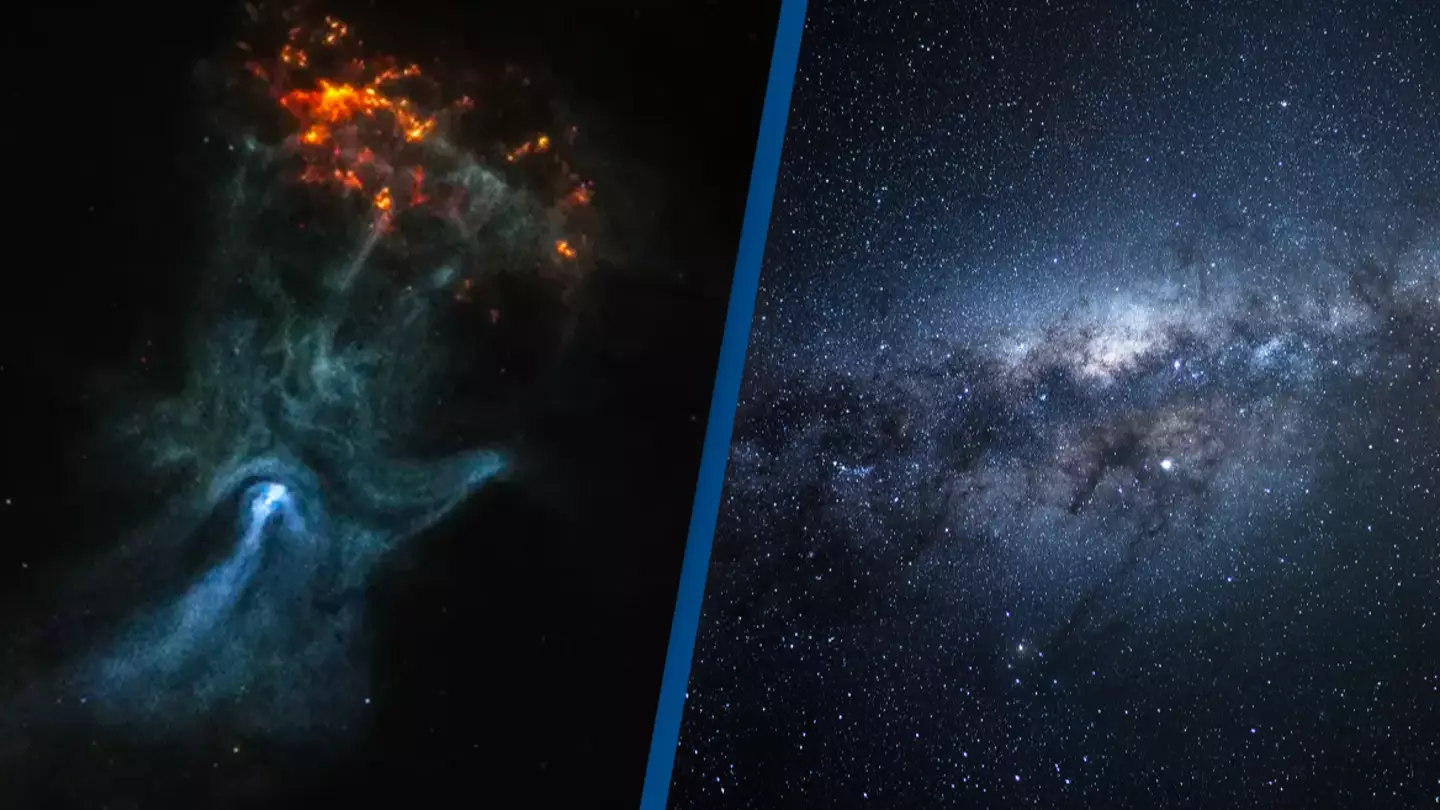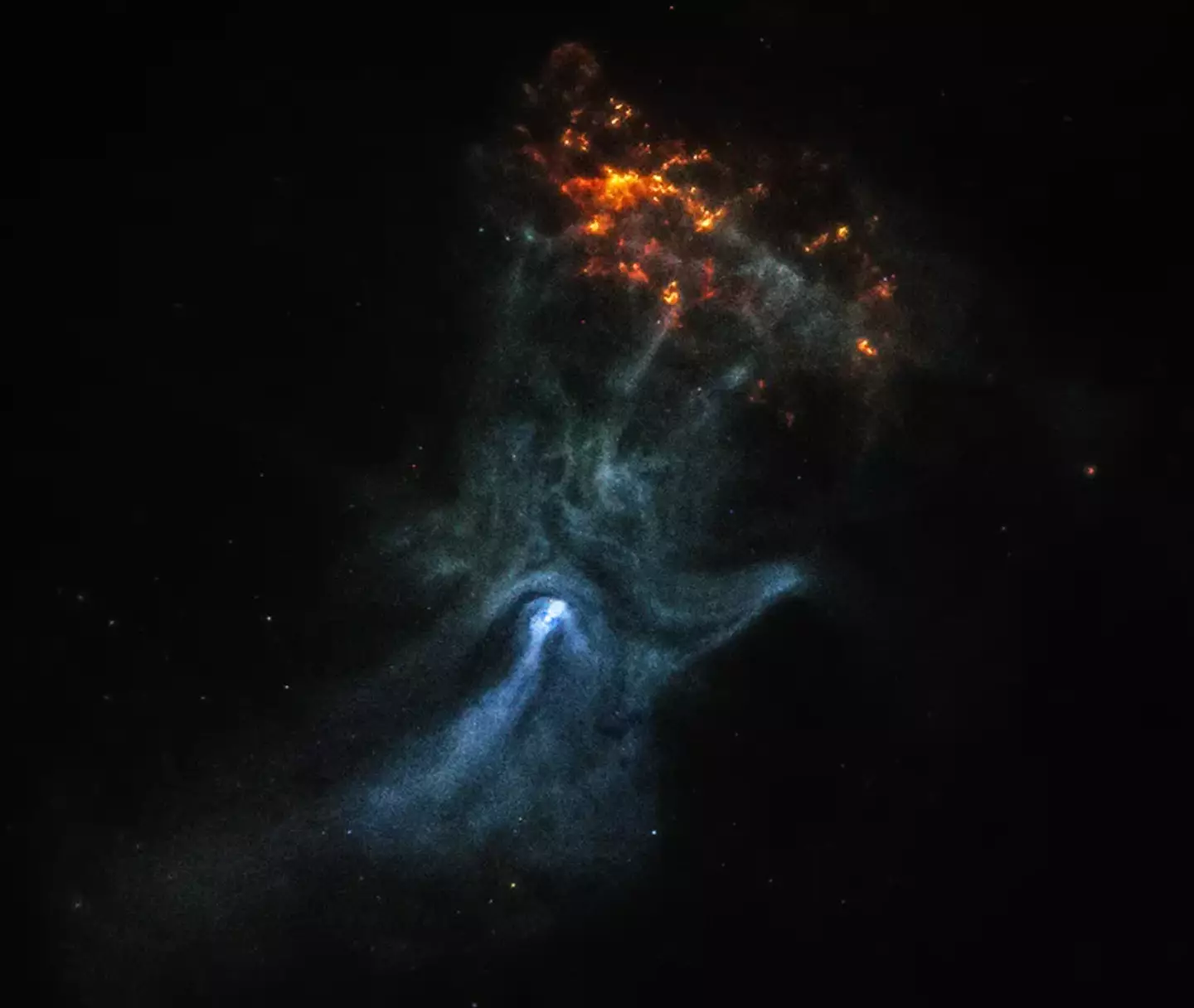
Anything's possible in infinite space - even a nebula which looks eerily like a human hand, according to an image released by NASA.
NASA released the ghostly image on 30 October, just in time for the height of spooky season on Halloween.
Nicknamed the 'Hand of God', the structure is the result up of a pulsar - a highly magnetized rotating neutron star - and its pulsar wind nebula.
The pulsar, which has the catchy name PSR B1509-58, is located at the base of the 'palm' in the structure, and was left behind by a supernova explosion about 1,600 years ago.
Advert
As it spins, the neutron star releases jets of matter and antimatter from its poles, as well as a powerful wind.
Its wind nebula, referred to as MSH 15-52, makes up the rest of the 'hand'.
Using its newest X-ray telescope, NASA observed the star for about 17 days before combining observations from the Chandra X-ray telescope in order to create the image released yesterday.
Roger Romani, of Stanford University in California, noted that the X-ray data appears to reveal the 'bones' as it offered up the 'first map of the magnetic field in the ‘hand’'.

“The charged particles producing the X-rays travel along the magnetic field, determining the basic shape of the nebula, like the bones do in a person’s hand," he explained.
Advert
Josephine Wong, who co-authored the study alongside Romani, added: “We’re all familiar with X-rays as a diagnostic medical tool for humans.
"Here we’re using X-rays in a different way, but they are again revealing information that is otherwise hidden from us.”
As well as creating an image which looks like a giant hand ready to reach across space and snatch Earth right out of orbit, the data from the X-ray has taught NASA about how pulsars can act as particle accelerators.

The image shows a bright X-ray jet directed from the pulsar to the 'wrist' of the hand, and reveals that polarization at the start of the jet is low.
Advert
In a press release, NASA said this is likely because this is a turbulent region with complex, tangled magnetic fields associated with the generation of high-energy particles.
At the end of the jet, however, the magnetic field lines appear to straighten and become much more uniform, causing the polarization to become larger.
This implies particles are given an energy boost in complex turbulent regions near the pulsar, before flowing to areas where the magnetic field is uniform along the 'wrist', and what looks like the hand's fingers and thumb.
Niccolò Di Lalla, who also co-authored the paper, said: “We’ve uncovered the life history of super energetic matter and antimatter particles around the pulsar."